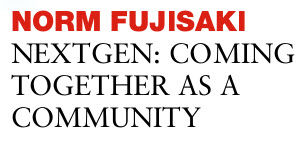 For people in the US, it’s NextGen. For Europeans, it’s SESAR or Single European Sky. For the Japanese, it’s CARATS. These are the programs by which the air transportation systems of tomorrow will be developed—that is, for the US, Europe and Japan. So, what’s the rest of the world supposed to do?
For people in the US, it’s NextGen. For Europeans, it’s SESAR or Single European Sky. For the Japanese, it’s CARATS. These are the programs by which the air transportation systems of tomorrow will be developed—that is, for the US, Europe and Japan. So, what’s the rest of the world supposed to do?
Recently, ICAO held the Global Air Navigation Industry Symposium (GANIS) in Montreal. The focus of GANIS was driven by ICAO’s Director of the Air Navigation Bureau, Nancy Graham: to unveil the Aviation System Block Upgrade (ASBU) framework to be used by all states to upgrade their air transportation systems. The symposium allowed the community to engage in the process of defining what the ASBUs ultimately should be when the ICAO 12th Air Navigation Conference (ANC/12) convenes in November of 2012. This will be the point at which the member states approve the definition and concept of block upgrades.
There has been some measure of angst around the manner in which the block upgrades were developed so far. They were developed by a small, closed committee of technical experts. The traditional ICAO processes weren’t used. Things were happening too fast. Perhaps they are, but this is signature Nancy Graham. She personifies the motto “Make dust or eat dust.” She hasn’t eaten dust in a long time. Over the years, people have complained about ICAO’s glacial pace. People have said it’s too much like the UN. Well, itis part of the UN. So, why the surprise? Nancy Graham is on a mission to change that. She’s confronted the need to address what happens in the rest of the world. Some have said that the rest of the world could simply follow the lead of the US, Europe or Japan. But, those same people haven’t spent enough time outside the US, Europe and Japan to realize that things are different in other parts of the world. Traffic levels. Pre-existing infrastructure (a blessing and a curse). Power and broadband. Political, institutional and cultural differences. One size doesn’t fit all.
The ICAO plan acknowledges these differences and provides flexibility in implementing the block upgrades depending on the individual state’s “need” and “readiness.” Regardless of the form of block upgrade implementation, however, each state must 1) clearly define measurable operational improvements, 2) install the required ground and airborne equipment with required operational and regulatory approvals, 3) have the standards and procedures for ground and airborne systems, and 4) have a positive business case. ICAO says that if states do this, “a level of investment certainty for operators, infrastructure providers and equipment manufacturers” will result. Sounds simple enough. Except, we haven’t been able to do this very well in the US and Europe.
Let’s take item 1, measurable operational improvements. To define measurable improvements, we have to clearly define the problem we are solving. It’s amazing to me how we seem to launch off on new programs without having a truly clear definition and understanding of the problem that must be solved. We wind up with poor requirements, functionality that isn’t laser-focused on solving the problem, bigger than necessary price tags, and a lack of adequate metrics to measure improvements. Improvement against what?
Let’s take item 4, a positive business case (items 2 and 3 are done as a necessary part of completing item 4). A positive business case requires the present value of future benefits to exceed the present value of all costs. Benefits are essentially dependent on the size of the operational improvements. So, to do item 4, you must go back to item 1. All roads lead from item 1 and circle back to item 1. One of the main reasons we have so much trouble developing a positive business case is that we fail to do an adequate job on defining the operational problem and the associated measurable operational improvements that fix them.
While there is flexibility in the way that ICAO will allow block upgrades to be made in each state, one critical thing to keep in mind is that it’s the same aircraft and crew flying from one state to the next. So, the block upgrades can depend on a state’s specific need and a state’s readiness, but it shouldn’t require aircraft to carry different sets of equipment or crews to use different sets of procedures when flying from state to state. To the extent that the aircraft and crew can be relied upon to do more, the need for ground-based infrastructure and workforce will be reduced. It’s also naturally faster to do technology insertion and workforce implementation on the airborne end than it is on the ground, particularly when thinking about this on a global scale. There’s a lot of money and time to be saved.
As we embark on a long overdue plan to upgrade the global air transportation system beyond just the US, Europe and Japan, let’s use a balanced approach that doesn’t over-emphasize the ground-based portion of block upgrades. If anything, we ought to place more emphasis on the airborne end. Let’s not over-emphasize the block upgrades themselves and lose sight of the fundamental problems that need to be solved. Even before block upgrades were uttered, there had been insufficient attention given to defining and understanding operational problems. When we seek to more clearly define and truly understand the operational problems we face, we likely will find that there are creative ways of solving good portions of those problems quickly and inexpensively.






Connect
Connect with us on the following social media platforms.